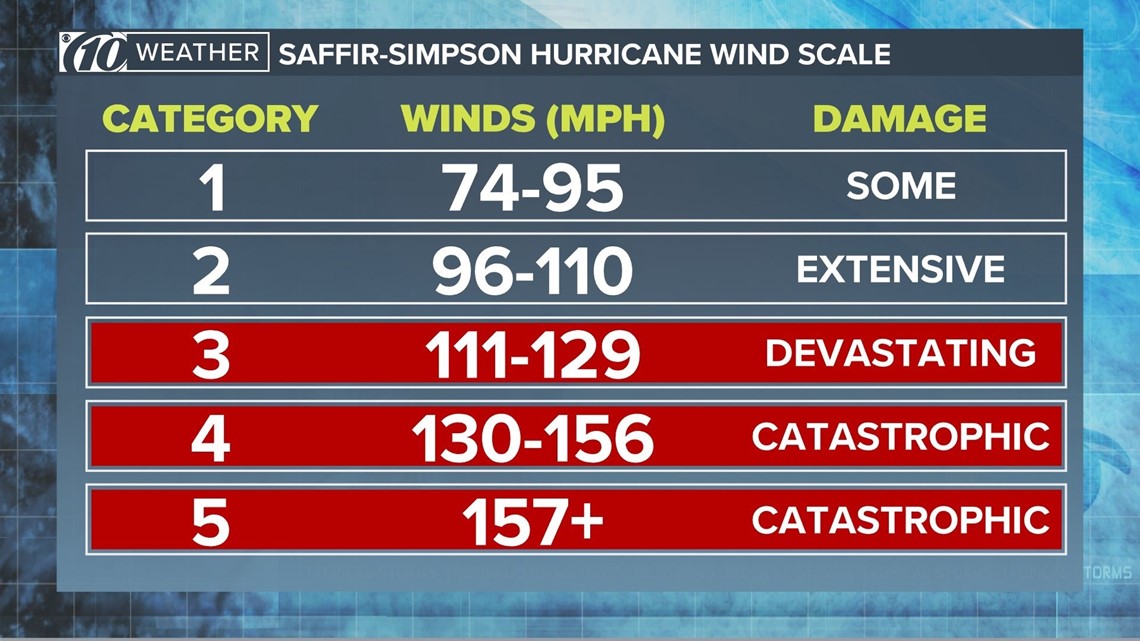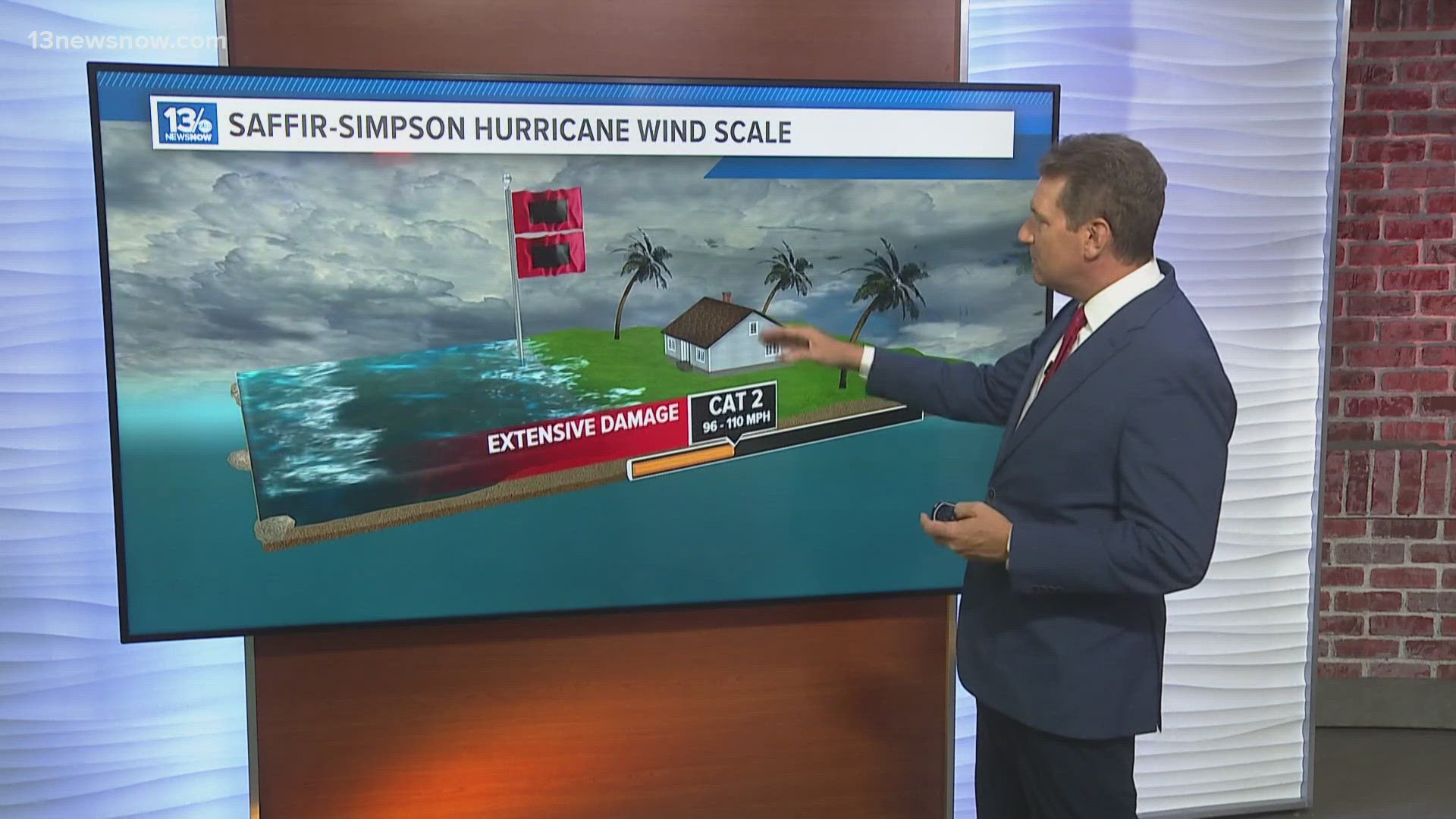NORFOLK, Va. — The Saffir-Simpson Scale. You've heard of it, you've even used it to talk about hurricanes with your friends and family. But how much do you really know about it?
Each time you hear a meteorologist talk about a hurricane by category, it is a rating, Cat.1 to 5, as designated by the scale. It was developed in 1971 by civil engineer Herbert Saffir, and Robert Simpson, who was at the time director of the National Hurricane Center.
While doing a study of housing in hurricane-prone regions, Saffir realized that there was a need to describe the expected effects of hurricanes based on wind speed. He came up with a scale that showed expected damage to structures and presented it to the National Hurricane Center.
Robert Simpson then added associated storm surge and flooding typical with the various categories of hurricanes.
Over time, they determined that storm surge and flood impacts were greatly affected by more than just wind strength, so they removed that from the scale in 2009.
A few category tweaks were made in 2012, and we now have what is known as the Saffir-Simpson Hurricane Wind Scale.


You might wonder how they determine the wind for the scale?
It is based on a one-minute average maximum sustained winds at 10 meters or roughly 33 feet above the ground.
NHC uses land based observations, observations from ships at sea, and reconnaissance flights to measure maximum sustained wind speeds. For systems over the open oceans and seas, satellites are used to accurately figure the maximum winds.
Here is the Saffir Simpson Hurricane Wind Scale currently in use:
Cat 1: 74-95 mph. Very dangerous winds with some damage to roofs and siding. Shallow rooted trees may topple, Power outages likely.
Cat 2: 96-110 mph. Extremely dangerous winds, extensive damage. Major roof and siding damage, many trees down, near-total power outages.
Cat 3: 111-129 mph. Devastating wind damage. Major structure damage, some roofs lifted. Power and water may be unavailable for days to weeks.
Cat 4: 130-156 mph. Catastrophic wind damage. Severe damage to structures, including loss of roofs and some exterior walls. Power outages for weeks or months.
Cat 5: 157 mph or higher. Catastrophic wind damage. High percentage of structures destroyed. Much of area uninhabitable for weeks or months.

